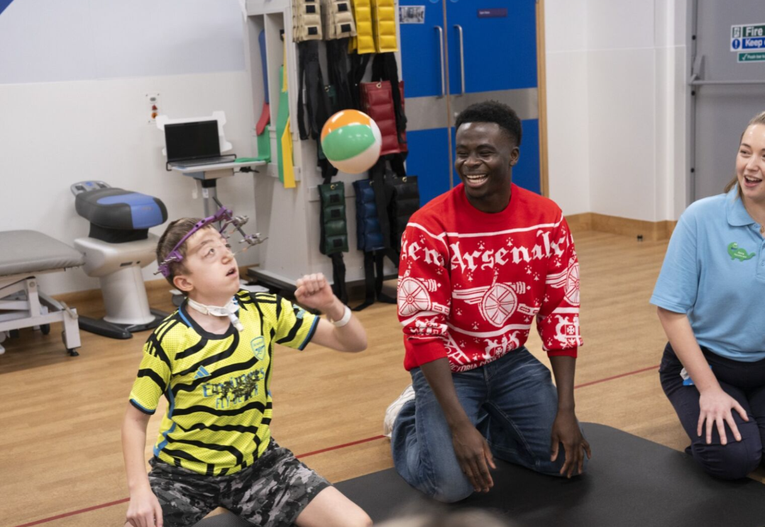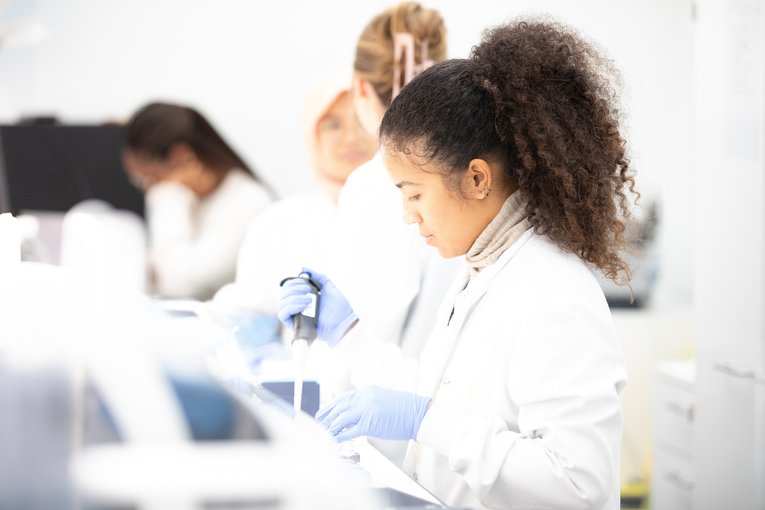
https://www.gosh.nhs.uk/news/imaging-techniques-help-to-give-parents-choice-after-miscarriage/
Imaging techniques help to give parents choice after miscarriage
16 Aug 2022, 4 p.m.
For ten years our Radiology and Pathology Teams at Great Ormond Street Hospital (GOSH) have been developing a range of imaging techniques to provide less and minimally invasive autopsies.
These techniques can help provide answers to parents who have suffered pregnancy loss, and in some cases, help provide valuable forensic evidence on children who have died as the result of violence or criminal harm.
This service has helped to investigate the possible causes of death for over 1,700 children and babies who otherwise may not have had a cause of death investigated, or would have required a full autopsy.
A fundamental service
Every day in the UK, sadly 14 babies are stillborn or die soon after birth, and many more pregnancies end in miscarriage before 24 weeks.
The loss of a baby has a profound impact on families and leaves many parents with questions about why their baby died. To try to find out why this happened, parents are usually offered a post-mortem investigation to provide answers about why the pregnancy ended, and whether it might happen again.
Whilst over 90% of parents are offered an autopsy, the majority now refuse this investigation. A traditional post-mortem involves making incisions and taking tissue samples for analysis, but parents often tell us – understandably - that they find the idea of this too traumatic to consider and feel their baby has “been through enough already”. Parents may also not agree to an autopsy for religious and cultural beliefs.
As a result, many parents do not obtain potential important information regarding reasons behind their miscarriage (and potential future pregnancy losses), and some have reported regretting their decision not to proceed with an autopsy, feeling that many questions remain unanswered.
Imaging techniques
Determined to address this need and support families, the Less Invasive Autopsy (LIA) team, lead by Professors Owen Arthurs and Neil Sebire, have worked hard to develop imaging techniques that achieve the same result as a full autopsy without any incisions. These include X-Rays, ultrasound, CTs and MRIs, and a new technique called micro-CTs for very small babies.
When the team first started, the traditional techniques did not provide sufficiently high-resolution imaging for smaller foetuses, particularly after early pregnancy loss, but the team has spent years refining techniques to provide the most detailed results. Now imaging such as micro- CTs, lead by Dr Ian Simcock, can give high resolution imaging smaller than the thickness of a human hair.
In some cases, imaging cannot provide the answers and further investigations are required to help find a cause of death. In these instances, a pathologist can perform a ‘minimally invasive autopsy’. This is similar to key hole surgery, and has far fewer incisions than a full autopsy.
Care after death
The team term the process of investigating the cause of a death as ‘care after death’.
The service increases parental choice at a difficult time. Parents can make informed decisions on how they’d like the investigations to be carried out, in a way that they are comfortable with.
Overall, this means more people will choose to have some form of autopsy. Seeking answers has been shown to support parents through the grieving process, and also help advise for future pregnancies.
The service also provides an alternative option to those who would decline a full autopsy for religious reasons. This means more parents can choose to have some form of autopsy, which can help provide answers after miscarriage.
Bereaved parents tell us that one of the key aspects in helping them make the right decision at this difficult time is having a range of choices available, with a clear explanation of what each one involves and whether it could help them.
Most parents now choose a less invasive form of autopsy if they think it will give them similar information to a traditional autopsy.
Helping seek justice through forensic work
These imaging techniques are also used in post-mortem imaging to provide invaluable forensic evidence. They can help to establish causes of death of a child or young person in instances where this is unknown or suspicious, or there are suspected injuries from physical abuse.
In these instances, a post-mortem may be ordered by the coroner, and imaging techniques (whole body X-rays and CT) are used ahead of a full autopsy. Imaging can often pick up valuable evidence that is more difficult to detect in full autopsies. Imaging is also helpful because we are be able to refer back to them at a later date if new information comes to light.
Our research has shown that CTs are much more accurate than X-ray for demonstrating rib fractures which are highly specific for abuse.
The service plays an essential role in seeking justice on behalf of a child who may have died as a result of violence or criminal harm.
Our use of detailed imaging in complex cases like these has helped identify rib fractures that might otherwise have been missed, which has significant implications for understanding how the child has been handled.
Supporting families for ten years
This year marks the tenth anniversary of the service. Since its formation in 2012, the unit has offered a less invasive means of investigating possible causes of death for over 1,700 children and babies.
They are the broadest of its kind in the UK, working on up to 300 cases per year. It is also the only post-mortem imaging service in the UK which covers foetal and neonatal cases as well as older children and teenagers.
The success of the service has led to the team being referred cases from around the country and sometimes, internationally, because of their expertise. Hospitals around the world have also been in touch wanting to learn about micro-CT scanning for miscarriage.
Next steps
The team are continually working to improve their imaging techniques and find out what techniques work best in which circumstances. By striving to offer the least invasive and disruptive means necessary to find answers, the team help provide a better service to parents during a difficult time.
As a part of their work to provide answers to families, the team are also looking at how genetic testing could help. Taking a small sample of tissue and sequencing its genome can help identify if the baby had a genetic condition. In the case of multiple pregnancy losses, the team can also look across the tissue samples to see if there is a common cause. This can help in genetic counselling for future pregnancies.
With advances in modern molecular and genetic techniques, I can envisage a future in which parents might be offered an imaging-based autopsy and then tiny samples of tissue taken, which could be enough to give a final diagnosis.
For more information or support visit Sands or the Miscarriage Association.

Arsenal stars bring festive cheer to patients, families and staff
GOSH was buzzing with excitement this month as players from Arsenal’s men’s and women’s first‑team squads paid a special visit to children, families, and staff.

NIHR launches £13.7m investment into brain tumour research
The National Institute for Health and Care Research (NIHR) has announced a £13.7 million investment that will support ground-breaking research to develop novel brain tumour treatments in the UK.

New consortium aims to help improve care for arthritis patients
A new UK-led research group, including Great Ormond Street Hospital and University College London, aims to improve the lives of children, young people and adults with arthritis by defining for the first time what being in ‘remission’ from arthritis truly

Great Ormond Street Hospital joins the Circular Economy Healthcare Alliance (CEHA)
By joining CEHA, Great Ormond Street Hospital reaffirms its commitment to ‘do no harm’—not only to our patients, but to the environment and future generations.
